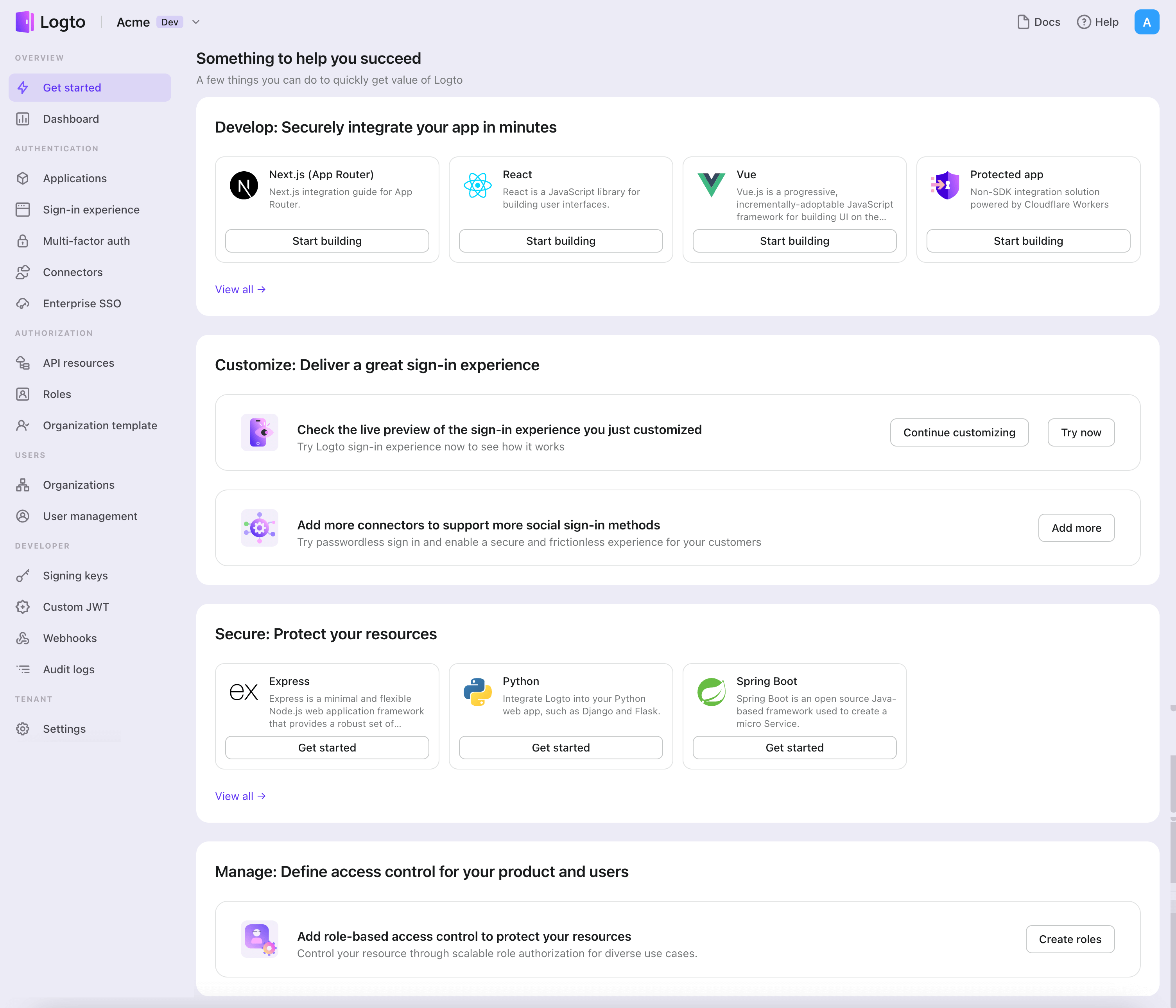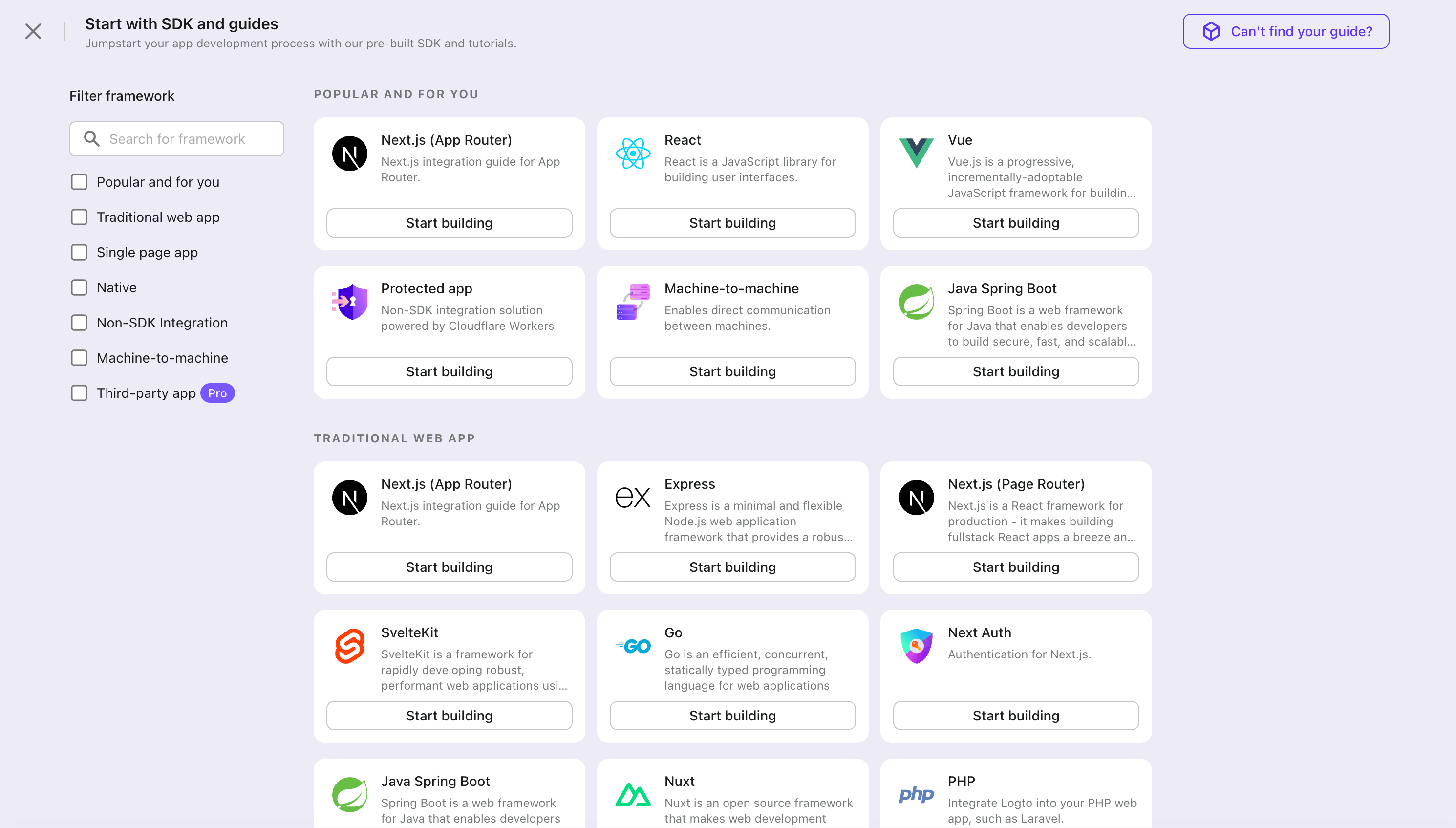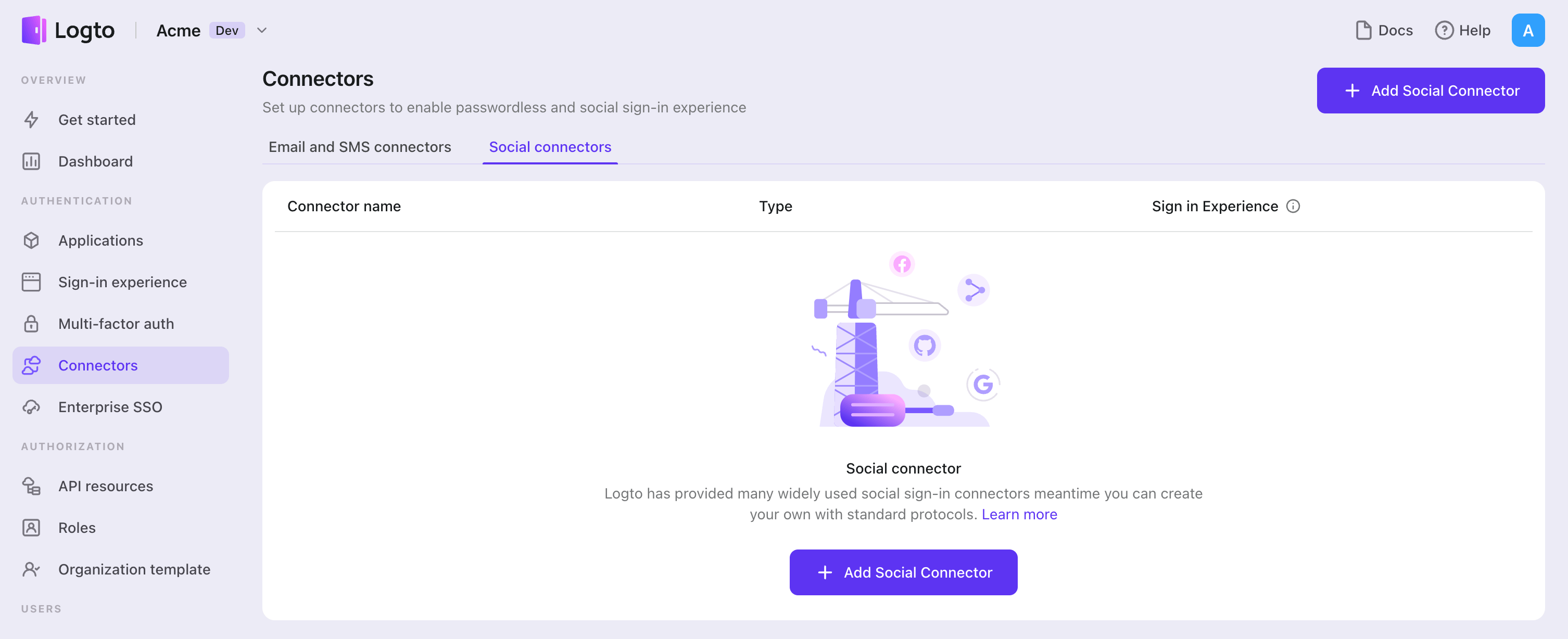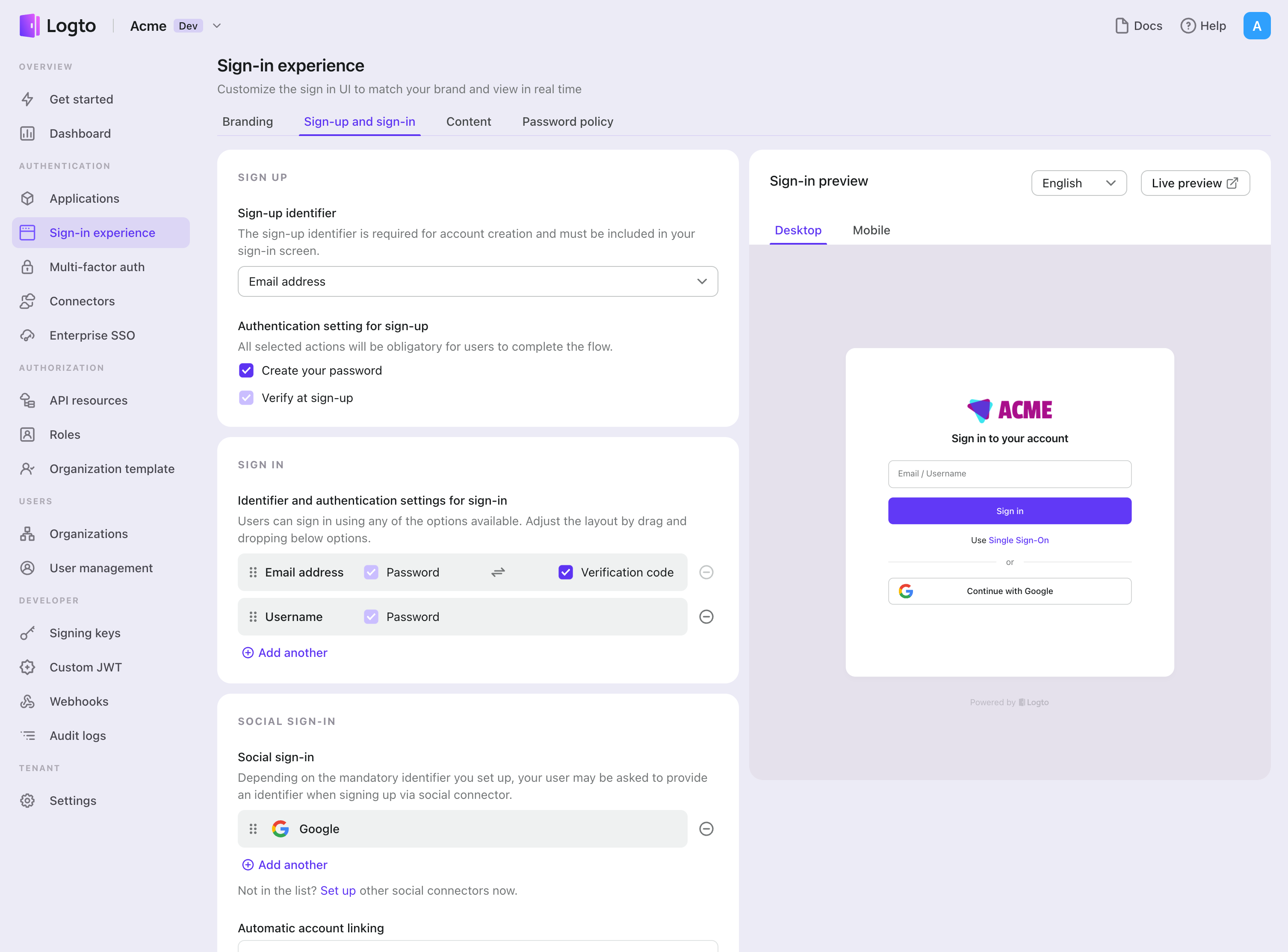Logto is an Auth0 alternative designed for modern apps and SaaS products. It offers both Cloud and Open-source services to help you quickly launch your identity and management (IAM) system. Enjoy authentication, authorization, and multi-tenant management all in one.
We recommend starting with a free development tenant on Logto Cloud. This allows you to explore all the features easily.
In this article, we will go through the steps to quickly build the DingTalk sign-in experience (user authentication) with WordPress plugin and Logto.
Prerequisites
- A running Logto instance. Check out the introduction page to get started.
- Basic knowledge of WordPress plugin.
- A usable DingTalk account.
Create an application in Logto
Logto is based on OpenID Connect (OIDC) authentication and OAuth 2.0 authorization. It supports federated identity management across multiple applications, commonly called Single Sign-On (SSO).
To create your Traditional web application, simply follow these steps:
- Open the Logto Console. In the "Get started" section, click the "View all" link to open the application frameworks list. Alternatively, you can navigate to Logto Console > Applications, and click the "Create application" button.

- In the opening modal, click the "Traditional web" section or filter all the available "Traditional web" frameworks using the quick filter checkboxes on the left. Click the "WordPress" framework card to start creating your application.

- Enter the application name, e.g., "Bookstore," and click "Create application".
🎉 Ta-da! You just created your first application in Logto. You'll see a congrats page which includes a detailed integration guide. Follow the guide to see what the experience will be in your application.
Integrate WordPress with Logto
Install the plugin
- From WordPress admin panel
- From upload
- Go to Plugins > Add New.
- Search for "Logto", or enter https://wordpress.org/plugins/logto/ in the search box.
- Click Install Now.
- Click Activate.
- Download the Logto WordPress plugin from one of the following links:
- Latest release: Download the file which name in the format of
logto-plugin-<version>.zip. - WordPress plugin directory: Download the file by clicking the Download button.
- Latest release: Download the file which name in the format of
- Download the plugin ZIP file.
- Go to Plugins > Add New in your WordPress admin panel.
- Click Upload Plugin.
- Select the downloaded ZIP file and click Install Now.
- Click Activate.
Configure the plugin
Now you should be able to see the Logto menu in your WordPress admin panel sidebar. Click Logto > Settings to configure the plugin.
You should have a traditional web application created in Logto Console before configuring the plugin. If you haven't created one, please refer to Integrate Logto into your application for more information.
The minimum configuration to get started for the plugin is:
- Logto endpoint: The endpoint of your Logto tenant.
- App ID: The app ID of your Logto application.
- App secret: One of the valid app secrets of your Logto application.
All values can be found on the application details page in Logto Console.
After filling in the values, click Save Changes (scroll down to the bottom of the page if you can't find the button).
Configure redirect URI
The redirect URI is the URL to which Logto will redirect users after they have authenticated; and the post sign-out redirect URI is the URL to which Logto will redirect users after they have logged out.
Here's a non-normative sequence diagram to illustrate the sign-in flow:
Here's how the sign-out flow looks like in a non-normative sequence diagram:
To learn more about why redirect is needed, see Sign-in experience explained.
In our case, we need to configure both redirect URIs in your Logto Console. To find the redirect URI, go to the Logto > Settings page in your WordPress admin panel. You'll see the Redirect URI and Post sign-out redirect URI fields.
- Copy the Redirect URI and Post sign-out redirect URI values and paste them into the Redirect URIs and Post sign-out redirect URIs fields in your Logto Console.
- Click Save changes in Logto Console.
Checkpoint: Test your WordPress website
Now you can test your Logto integration in your WordPress website:
- Open an incognito browser window if needed.
- Visit your WordPress website and click the Log in link if applicable; or directly visit the login page (e.g.,
https://example.com/wp-login.php). - The page should redirect you to the Logto sign-in page.
- Complete the sign-in or sign-up process.
- After successful authentication, you should be redirected back to your WordPress website and logged in automatically.
- Click the Log out link to log out of your WordPress website.
- You should be redirected to the Logto sign-out page, then back to your WordPress website.
- You should be logged out of your WordPress website.
To learn more about the WordPress plugin settings, see WordPress quick start.
Add DingTalk connector
To enable quick sign-in and improve user conversion, connect with WordPress as an identity provider. The Logto social connector helps you establish this connection in minutes by allowing several parameter inputs.
To add a social connector, simply follow these steps:
- Navigate to Console > Connectors > Social Connectors.
- Click "Add social connector" and select "DingTalk".
- Follow the README guide and complete required fields and customize settings.

If you are following the in-place Connector guide, you can skip the next section.
Set up DingTalk OAuth app
Create a web app in the DingTalk Open Platform
Tips: You can skip some sections if you have already finished.
Register a DingTalk developer account
If you do not have a DingTalk developer account, please register at the DingTalk Open Platform.
Create an application
- In the DingTalk Open Platform "Application Development" > "Internal Enterprise Application" > "DingTalk Application", click "Create Application"
- Fill in the application name and description, and click "Save"
- In the left navigation bar, select "Development Configuration" > "Security Settings", find and configure the "Redirect URL"
${your_logto_origin}/callback/${connector_id}. You can find theconnector_idon the connector details page after adding the respective connector in the management console - In the left navigation bar, select "Basic Information" > "Credentials and Basic Information" to get the
Client IDandClient Secret
Configure permissions
In "Development Configuration" > "Permission Management", select Contact.User.Read and Contact.User.mobile permissions and authorize them
Release Application
In the left navigation bar, select "Application Release" > "Version Management and Release", create and release the first version to activate the Client ID and Client Secret
If the application does not release a version, the obtained "Client ID" and "Client Secret" cannot be used, or requests will fail.
Configure your connector
Fill out the clientId and clientSecret fields with Client ID(formerly AppKey and SuiteKey) and Client Secret(formerly AppKey and SuiteKey) you've got from OAuth app detail pages mentioned in the previous section.
scope currently supports two values: openid and openid corpid. openid allows obtaining the user's userid after authorization, while openid corpid allows obtaining both the user's id and the organization id selected during the login process. The values should be space-delimited. Note: URL encoding is required.
Config types
| Name | Type |
|---|---|
| clientId | string |
| clientSecret | string |
| scope | string |
Test DingTalk connector
That's it. The DingTalk connector should be available now. Don't forget to Enable connector in sign-in experience.
Once DingTalk web connector is enabled, you can sign in to your app again to see if it works.
Please ensure strict compliance with the usage specifications and development guidelines of the DingTalk Open Platform during the development process.
Support
If you have any questions or need further assistance, please visit the DingTalk Developer Documentation or contact DingTalk technical support.
Save your configuration
Double check you have filled out necessary values in the Logto connector configuration area. Click "Save and Done" (or "Save changes") and the DingTalk connector should be available now.
Enable DingTalk connector in Sign-in Experience
Once you create a social connector successfully, you can enable it as a "Continue with DingTalk" button in Sign-in Experience.
- Navigate to Console > Sign-in experience > Sign-up and sign-in.
- (Optional) Choose "Not applicable" for sign-up identifier if you need social login only.
- Add configured DingTalk connector to the "Social sign-in" section.

Testing and Validation
Return to your WordPress plugin app. You should now be able to sign in with DingTalk. Enjoy!
Further readings
End-user flows: Logto provides a out-of-the-box authentication flows including MFA and enterprise SSO, along with powerful APIs for flexible implementation of account settings, security verification, and multi-tenant experience.
Authorization: Authorization defines the actions a user can do or resources they can access after being authenticated. Explore how to protect your API for native and single-page applications and implement Role-based Access Control (RBAC).
Organizations: Particularly effective in multi-tenant SaaS and B2B apps, the organization feature enable tenant creation, member management, organization-level RBAC, and just-in-time-provisioning.
Customer IAM series Our serial blog posts about Customer (or Consumer) Identity and Access Management, from 101 to advanced topics and beyond.